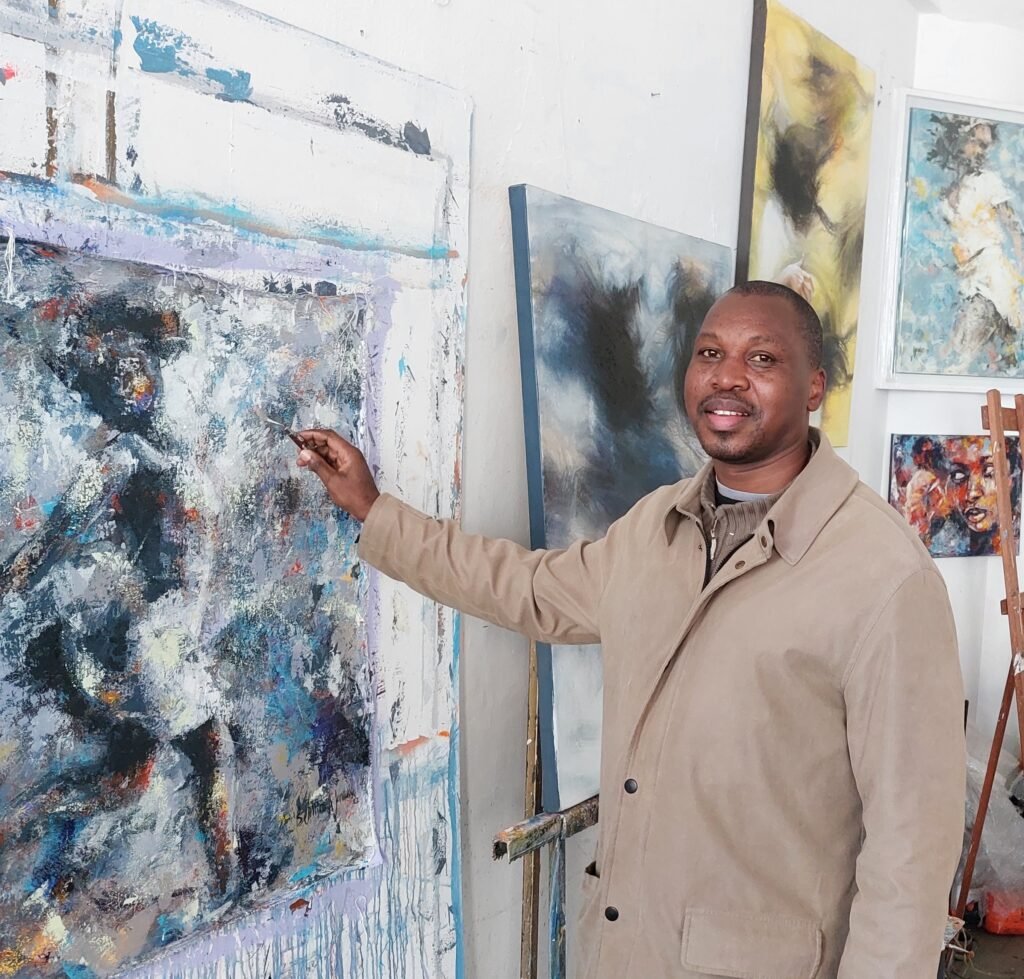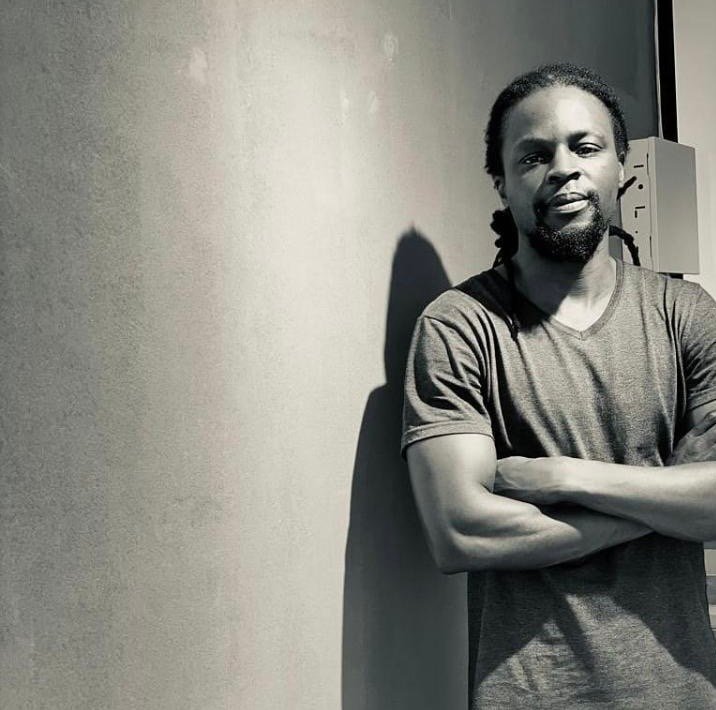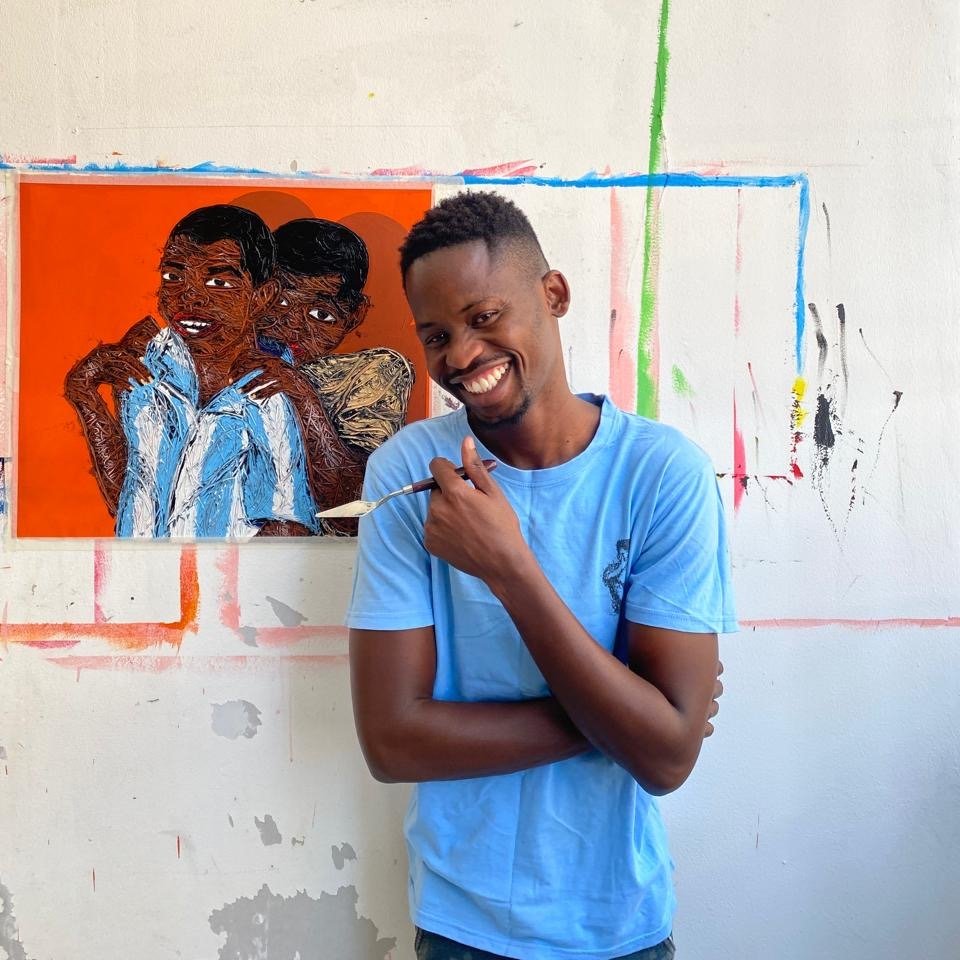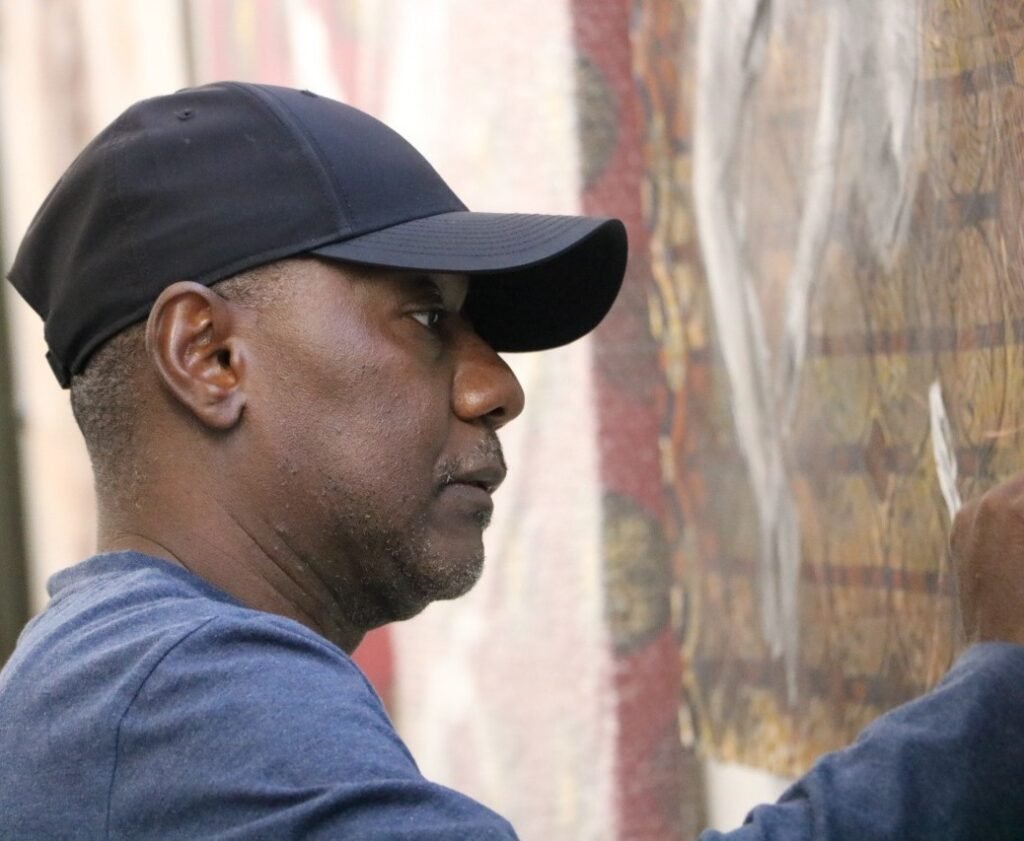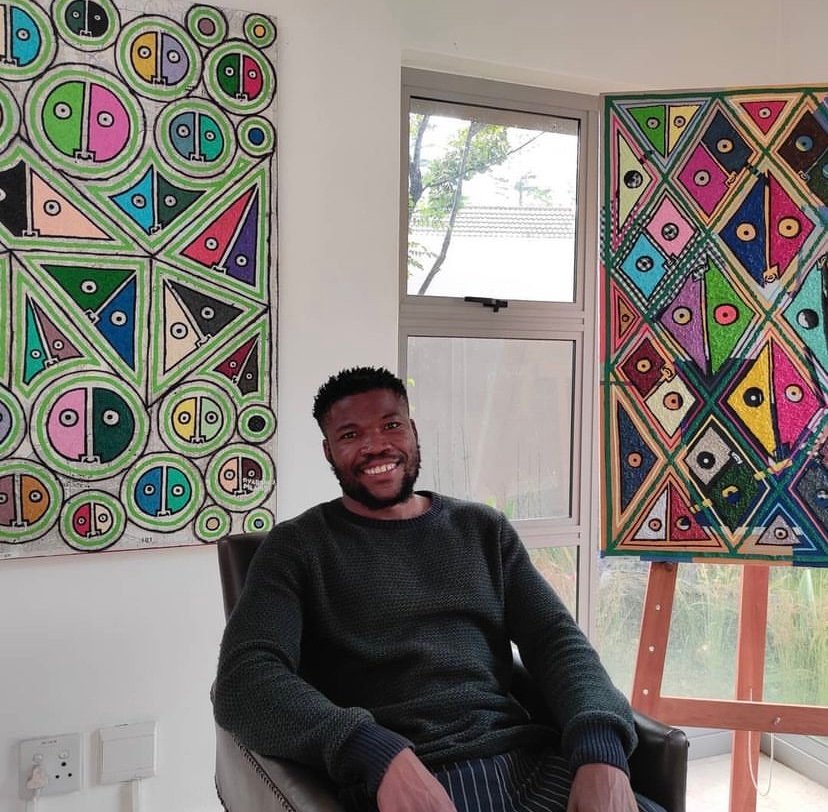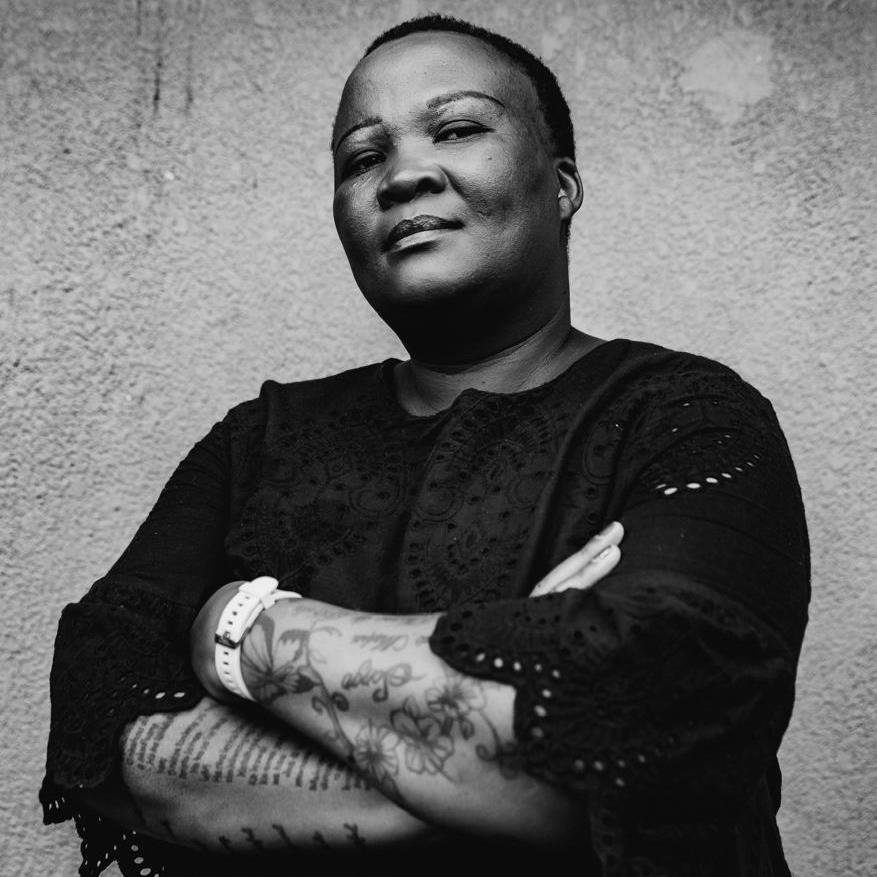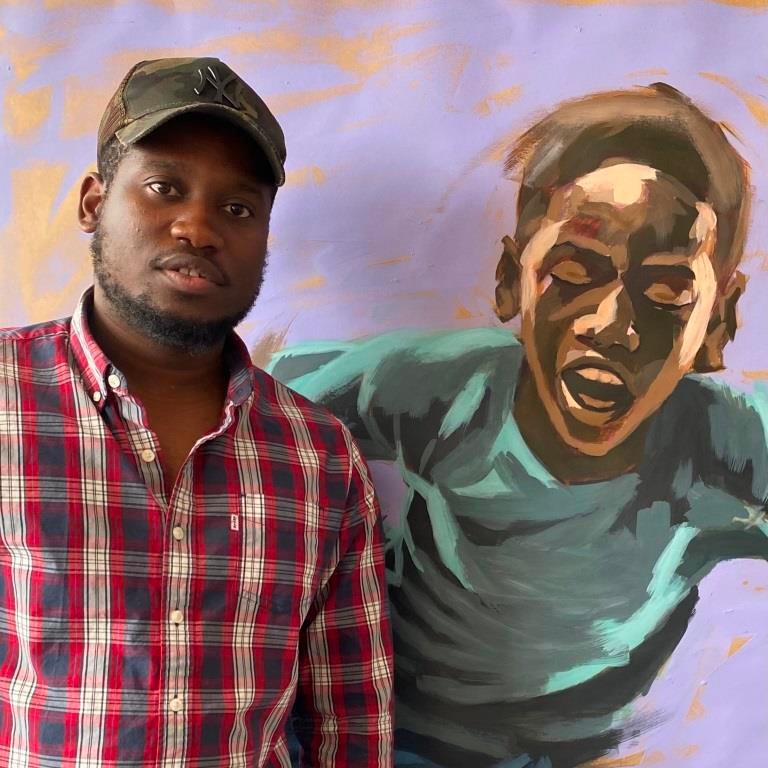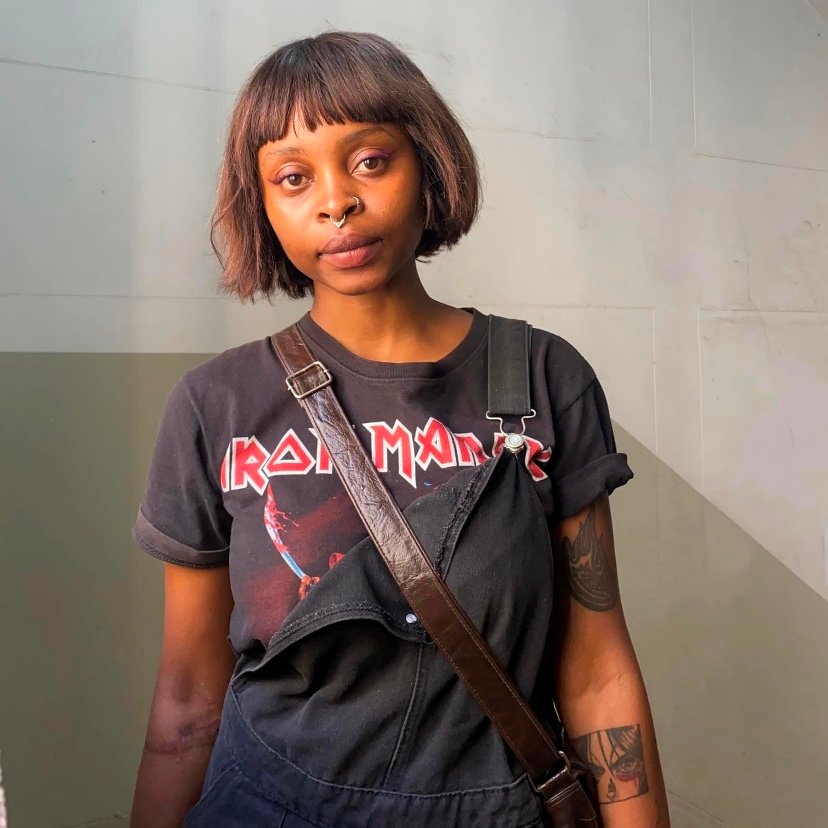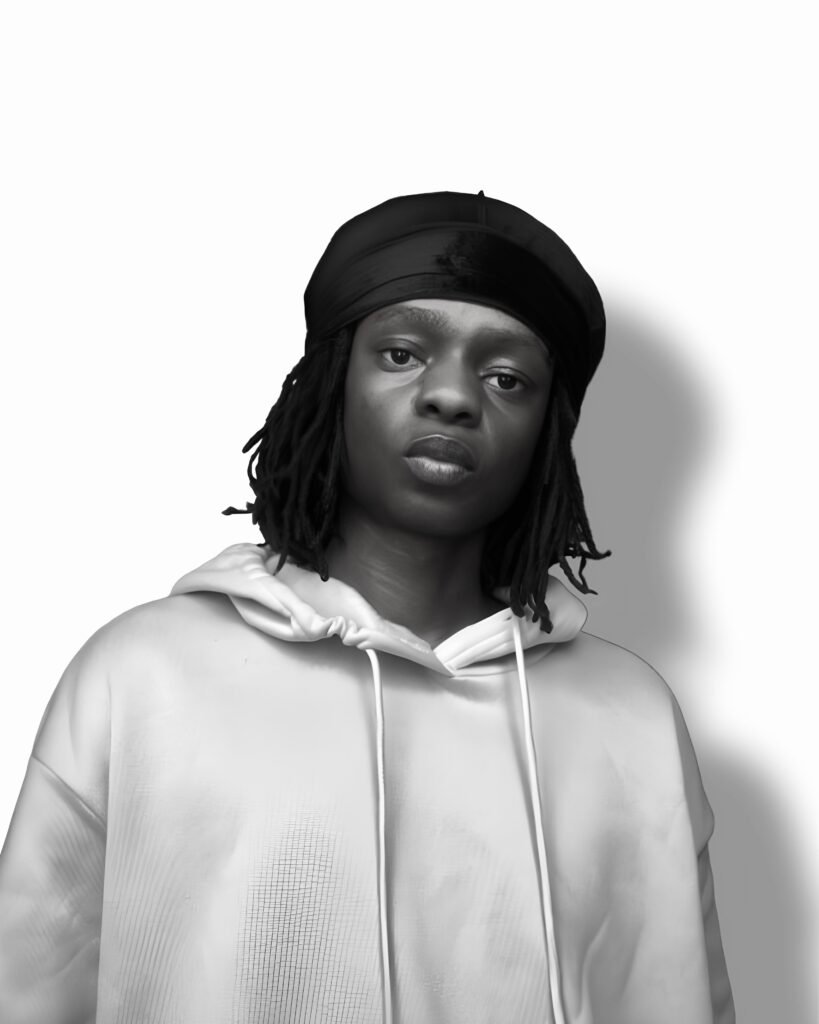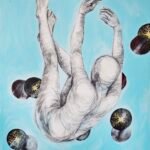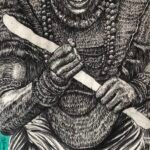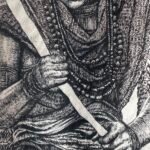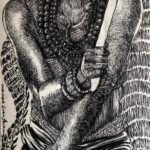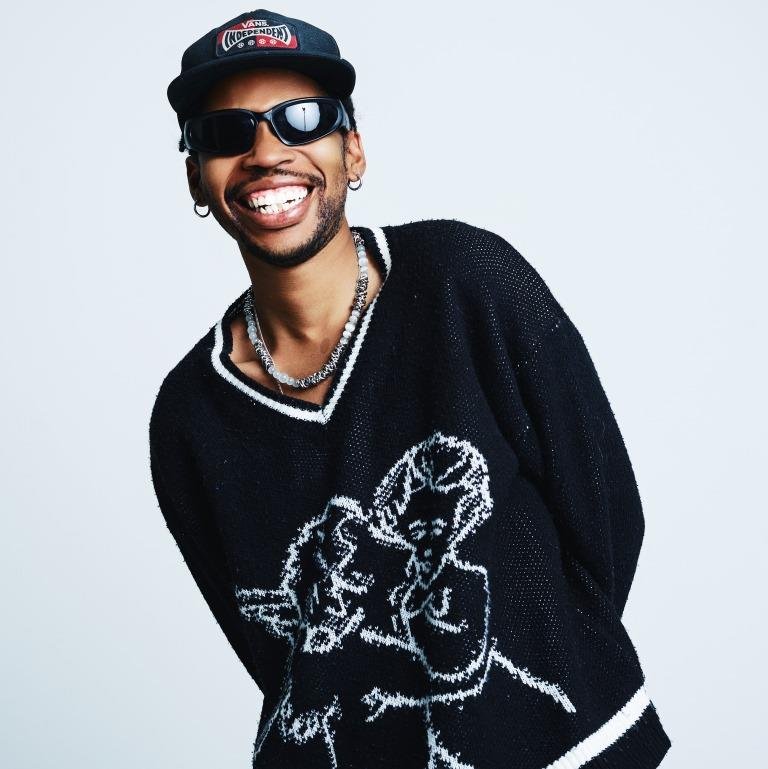
Njabulo Hlophe
On Auction
-
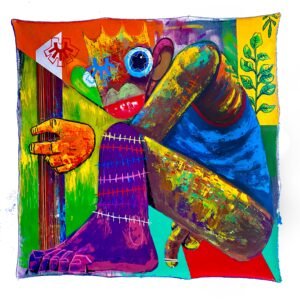 The dream lives onR55000,00
The dream lives onR55000,00 -
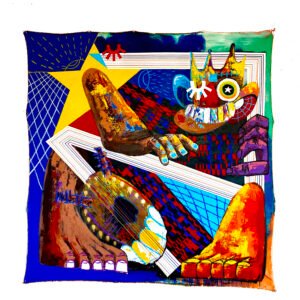 The Dreamer (A dream made manifest)R55000,00
The Dreamer (A dream made manifest)R55000,00 -
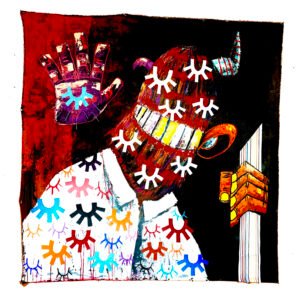 UNdabazabantu (The dream thief)R55000,00
UNdabazabantu (The dream thief)R55000,00
Njabulo Hlophe: A Storyteller Through Many Mediums
Njabulo Hlophe, a vibrant and versatile artist from the heart of Soweto, has become known for his ability to communicate complex narratives through a wide variety of mediums. His art is shaped by his life in Johannesburg, a city that has played a central role in forming his identity as both a person and an artist. Hlophe’s work is not simply about creating visually compelling pieces—it is about telling stories. Whether through murals, photography, sculpture, or mixed media, he views art as an ongoing conversation, a way to engage with the world and connect with people in meaningful ways.
A Childhood in Soweto: Sketching, Magazines, and Comic Books
Hlophe’s early relationship with art began as a child in the bustling township of Soweto. Growing up in an environment rich with history, culture, and community, he developed a fascination with visual communication from an early age. While many children are drawn to toys and games, Hlophe spent his time sketching what he saw around him. He was especially drawn to magazines, which provided him with a window into different worlds. These magazines were more than just a source of entertainment—they offered a glimpse of the wider world, from fashion to politics, and began to shape Hlophe’s understanding of how visual media could tell stories.
By creating his own comic books and sketchbooks, Hlophe explored different visual languages and forms of narrative. As a young artist, however, he had no formal reference for what art could achieve beyond personal expression. His sketches were initially a form of private exploration, allowing him to capture the people and places around him—especially the children at the mall, who would often become the subjects of his spontaneous drawings. These early experiences with sketching laid the foundation for his understanding of art as a medium for storytelling, even if he did not yet have the language to fully articulate it.
A Shift Toward Technology: Photography, Photoshop, and the Digital World
Although Hlophe’s passion for art was clear from an early age, his academic interests initially led him to study computer science. This decision seemed to take him away from his artistic inclinations, but it was not long before he found a way to merge the two worlds. During this time, Hlophe began spending more time with a close friend who introduced him to photography and the world of Photoshop. This exposure to digital tools was transformative, marking the beginning of Hlophe’s journey into visual storytelling through photography and digital media.
Photography, in particular, allowed Hlophe to step outside of the confines of his sketchbook and engage with the world in a more dynamic way. He could now document and manipulate images, telling stories not only through the subjects he captured but also through the way he presented them. The digital tools at his disposal—especially Photoshop—offered him an entirely new means of creative expression. The fusion of art and technology helped Hlophe realize that storytelling could be achieved not just through traditional means but through innovative, modern approaches as well.
2012: A Turning Point in Hlophe’s Artistic Journey
It was in 2012 that Hlophe began to truly recognize the direction in which he wanted to take his art. This was the year when he began to understand his own sensibilities as an artist. Over the next several years, he spent time refining his style and exploring the different ways he could express himself through visual media. This period of growth was instrumental in shaping the artist he would become, allowing him to experiment with various forms of storytelling, from photography to mixed media and beyond.
From 2014 to 2016, Hlophe’s work as a photographer flourished. He began to capture the daily life around him—especially the unique, urban aesthetic of Johannesburg, which was filled with signs, symbols, and visual language that was integral to the culture of the city. Hlophe found inspiration in everyday spaces: barbershops, tuckshops, and the vibrant street art that adorned the walls of his hometown. These environments, filled with graphic signage, lettering, and advertisements, began to shape the way he viewed the world and influenced the visual language he would go on to create.
The Influence of Material Culture and Everyday Visual Language
One of the core aspects of Hlophe’s artistic practice is his fascination with material culture—the way everyday objects, signs, and symbols shape identity, culture, and communication. Growing up in Johannesburg, Hlophe was exposed to a wide range of visual language, much of it rooted in the city’s working-class culture. From the bright and bold lettering on barbershop windows to the hand-painted signs in tuckshops, Hlophe became deeply attuned to the aesthetic power of these materials and their ability to communicate complex ideas in simple, often utilitarian forms.
This exposure to everyday visual language has become central to Hlophe’s artistic vision. He is drawn to the idea that art does not always need to be grand or monumental to have meaning—it can be found in the everyday objects and images that surround us. These elements are, for him, a way to understand the human experience and express the stories of a community. His work reflects a deep appreciation for the urban landscape, where graphic design, signage, and material culture converge to tell stories of identity, belonging, and community.
Conversations Through Art: A Group Chat with Fellow Creatives
For Hlophe, art is not just about self-expression—it is about dialogue. He views his art as a conversation with other artists, thinkers, and people, many of whom do not necessarily identify as artists themselves. In his view, everyone contributes to the creative conversation, whether through art, music, or everyday life. This perspective allows Hlophe to work across a variety of mediums, choosing whichever one best suits the story he wants to tell. Whether he is creating a mural on a wall, capturing an image through photography, or experimenting with sculpture, Hlophe sees his work as part of a larger group chat, a collective exchange of ideas, stories, and experiences.
Hlophe draws inspiration from a range of artists who also engage in conversations through their work, particularly those who use their art to communicate ideas about identity, society, and culture. He lists Jean-Michel Basquiat, Eugène Delacroix, and Kehinde Wiley as major influences, admiring their ability to bridge different creative realms and engage with issues of race, identity, and the human experience. For Hlophe, these artists are not just reference points—they are conversation partners, whose work challenges, inspires, and informs his own creative practice.
He also acknowledges the impact of South African artists such as Dumile Feni and Sam Nhlengethwa, whose work represents a dialogue with the broader African art tradition. Much like these artists, Hlophe’s work is deeply rooted in the African experience, but it also transcends boundaries, embracing influences from across the globe. His art, like the work of Feni and Nhlengethwa, is a culmination of conversations between different artists, time periods, and artistic practices.
The Influence of Steve Biko: “I Write What I Like” and the Liberation of Thought
A significant influence on Hlophe’s work is the philosophy of Steve Biko, the iconic anti-apartheid activist and intellectual. Biko’s seminal book, I Write What I Like, had a profound impact on Hlophe, particularly in how it liberated his thinking. Biko’s ideas about black consciousness and the importance of intellectual freedom resonated deeply with Hlophe, who sees art as a form of intellectual expression and liberation. Biko’s writings inspired Hlophe to embrace his own voice and to see his art as a tool for challenging dominant narratives, questioning societal structures, and expressing his personal and collective identity.
Biko’s influence also extends to Hlophe’s relationship with music. Just as Biko challenged his readers to think critically and embrace their intellectual freedom, music—especially genres like jazz, hip hop, and local South African sounds—has served as a form of liberation for Hlophe. He views music as a direct source of creative energy, fueling his sense of freedom and motivating him to paint. Music helps him think, move, and create, serving as both an emotional and intellectual catalyst for his work. The connection between music and visual art in Hlophe’s practice is central to his approach: much like a musician improvises and adapts to the rhythm of a song, Hlophe adapts and shifts his approach to art, allowing the energy of his surroundings—whether it’s the beat of a song or the pulse of a conversation—to guide his work.
The Future: An Artist on the Rise
Looking ahead, Hlophe is eager to continue exploring the vast possibilities of artistic expression. He is excited by the idea of working in new and experimental mediums, such as installation art, public art projects, and even fashion design. His interest in fashion, particularly as a form of storytelling and identity, suggests that Hlophe will continue to expand his creative horizons. The power of materiality and the human experience, which are central themes in his work, will likely continue to inform his approach, as he engages with different forms of media to express his stories.
Ultimately, Hlophe’s vision is one of ongoing dialogue and growth. He sees himself as part of a larger conversation about identity, culture, and the complexities of the human experience. His work continues to evolve, drawing on a wide range of influences—both local and global—and pushing the boundaries of what art can achieve. With his roots in Johannesburg, his love for storytelling, and his commitment to engaging with the world through his art, Hlophe’s future as an artist is bright. His work promises to resonate deeply with audiences, offering a unique and thought-provoking perspective on the human condition.
Conclusion
Njabulo Hlophe’s artistic practice is a testament to the power of storytelling through many mediums.

